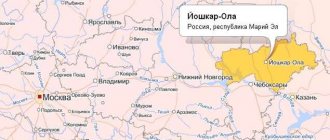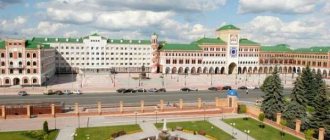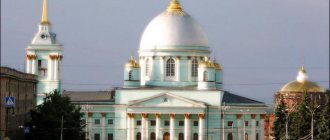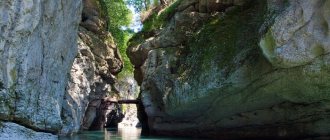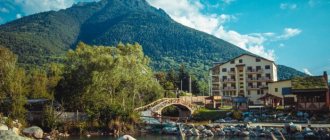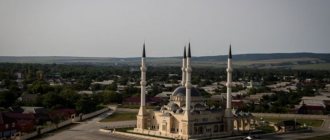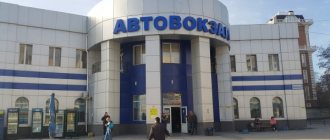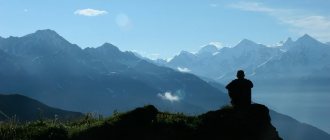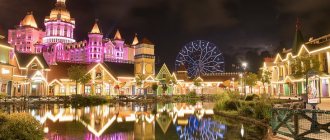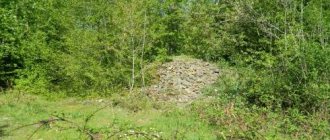Summer rest
Small in size, but very original, the republic offers its guests various types of summer recreation.
Fans of active recreation can use one of the tourist routes:
| Name | Places to visit | Duration |
| 3 republics | From Yoshkar-Ola to Kazan and Cheboksary | 3 days |
| Wonders of the Mari land | From Yoshkar-Ola to Kozmodemyansk and back | 2 days |
| Maple Mountain | Hiking route in the Mari Chodra National Park | 2-3 days with accommodation |
| Bolshaya Kokshaga Nature Reserve | Walking around the reserve | 2-3 days |
Those wishing to relax and improve their health can take advantage of the lake, located in a coniferous forest on the shore of the lake. Shap. Here you can use sports grounds, ride boats, catamarans, play billiards, and table tennis.
Fishing lovers can go to the Razdolye tourist complex, which is located in the untouched taiga. It is also a good place to relax with children.
In the village Kokshaysk on the Volga bank among the pine trees is located the Aeroflotets recreation center. Wooden houses and cottages are available for guests. You can use the Russian bathhouse and sauna. A special playground has been organized for children.
Italian garden
You can have a pleasant time enjoying the peace and beauty of the surrounding areas in the Italian Garden. This small city park was created quite recently, and you won’t be able to wander under the shade of large trees yet, but the place is striking in its elegance. In the center of the garden is a monument to the Florentine philanthropist Lorenzo di Piero de' Medici. According to the city administration, this Italian figure, who left his mark in the Renaissance, is an excellent example to follow. It was his actions that inspired the government of the republic to significantly transform Yoshkar-Ola in recent decades.
Italian garden
Winter holidays
Conditions for winter recreation in the republic have been created. An active recreation center has been opened in Yoshkar-Ola, offering skiing to everyone. In the village of Korty, not far from the capital, there is a training base where professional athletes are trained. Here residents and guests have the opportunity to go skiing.
Winter fishing is organized on numerous lakes of the republic. Enthusiasts of this activity even hold winter fishing competitions. Numerous recreation centers and hotel complexes are ready to receive vacationers all year round.
Bruges waterfront
Tourists in Yoshkar-Ola can see a real European corner - the Bruges embankment. It got its name in honor of an ancient city located in Belgium. Along the shore of Malaya Kokshaga there are beautiful houses that can be called real works of art. Each of them has different architectural features. The roofs of the buildings are painted in bright colors and decorated with decorative elements of the Gothic style. The embankment began to develop in the city in the early 2000s, when a decision was made to renew the city. It acquired its current appearance in 2011. Now it is a favorite place for walks among residents and guests of the city.
Bruges waterfront
Religious sites
In Mari El, along with the predominant Orthodoxy, paganism, which is the traditional Mari religion, has been preserved and operates. The Mari's belief in supernatural forces and their reverence for the sky, the Sun, the Moon, stars, and natural phenomena formed certain traditions, rituals, and ethical standards.
Local residents are very tolerant of other religions. For the Mari, all people, regardless of nationality and religious affiliation, are part of the Cosmos, therefore everyone is equal and worthy of respect. Religious rituals are carried out in sacred places - groves according to the traditional calendar.
Religious sites:
- The Mother of God of St. Sergius Hermitage. In the Kilemar region of the republic, near the Rutka River, almost directly in the taiga, this Orthodox monastery is located. Since 1999 it has been a men's monastery, and since 1888 there has been a Cheremis women's monastery on this site. Wooden beams and logs were used to construct all the buildings of the monastery. Construction was carried out according to the unwritten laws of Russian wooden architecture. The community is small, no more than 12 monks live there. To organize a pilgrimage trip, prior arrangement is required by phone. 8(83643)-2-52-02.
- Michael the Archangel Monastery. Located in the Gornomari region in the west of Mari El, the monastery was founded in the second half of the 19th century. The founders of the monastery, located on the coast of the Sura River, were local Mari peasants who, having received permission from church ministers, became hermits. Over time, the small monastery turned into a monastery, which was built in 1871 with donations from the local population. Having become a center for the dissemination of spiritual knowledge among the Volga region population, the monastery opened within its walls a one-of-a-kind comprehensive school, where more than 700 teenagers studied over the course of 20 years. In the 20s of the XX century. the monastery was closed and partially destroyed. Now the monastery is being restored.
- Yezhov Myrrh-Bearing Monastery. 15 km northeast of the capital Mari El in the Medvedevsky district is the Yezhov Myrrh-Bearing Monastery, founded in 1649. It was erected on the site where the miraculous image of the Myrrh-Bearing Women appeared to a local peasant. The monastery was built in accordance with the best traditions of Russian Orthodox architecture. It is located next to the holy spring. A wooden church built in the mid-17th century. by the beginning of the 18th century. replaced with stone. Now there are 2 churches in the monastery - the upper one, in which services are held in the warm season, and the lower one, warm, where services are held in the winter.
- Annunciation Cathedral in Yoshkar-Ola. In the capital of Mari El, on Republic Square, there is the Annunciation Cathedral, which was built at the expense of local parishioners. The consecration of the temple took place in 2021. The architecture of the cathedral is cross-domed, with a bell tower on the north side. The temple is large, 2000 people can be there at the same time. Mosaic panels are placed on the facades of the temple, and sculptural compositions of spiritual content are located at the entrance. Morning and evening services are held daily in the cathedral.
- Cathedral of the Resurrection of Christ in Yoshkar-Ola. On Voskresenskaya street. Yoshkar-Ola is the Cathedral of the Resurrection of Christ. This stone temple was erected in 1759 with donations from the population of Tsarevokokshaisk, as the city was then called. A merchant from Kazan, V.F. Bulygin, made a great contribution to the construction. On the south-eastern side of the temple there was a bell tower, consisting of 4 tiers, with 6 bells. With the establishment of Soviet power, the cathedral did not cease its activities, becoming the center of Orthodoxy in the area. But in 1928, by decision of local authorities, the temple was closed, and the building was used as a cinema.
Believers repeatedly petitioned to return the building to the Russian Orthodox Church, and in 1944 the request was granted. The partially destroyed building was repaired using the efforts and resources of the parishioners, and divine services were held there for about 20 years. In the 60s of the XX century. The authorities of the republic decided to demolish the cathedral. Despite protests from parishioners, the building was destroyed.
In the 2000s, the revival of the temple began. First, a worship cross was erected on the site of the destroyed cathedral, and then a temple was built. Now the church holds morning and evening services from Wednesday to Sunday. Twice a month (Thursday of the 2nd week and Saturday of the 4th week of the month) prayer services are organized for women preparing to become mothers.
Day one: evening walk around Yoshkar-Ola
According to the plan, our path lay from the hotel to the city Park of Culture and Recreation. Further, along Chavaina Boulevard, towards the embankment.
Walk of Military Glory
The Walk of Military Glory begins from Victory Boulevard. The monument of the same name rises here.
On the eve of Victory Day, the atmosphere was special; the city was breathing with the approaching holiday. Young Army soldiers solemnly kept watch at the “Eternal Flame.”
The Memorial of Glory is located in the central part of the city Park of Culture and Recreation.
Central City Park of Culture and Recreation
Park of Culture, or rather, the Central Park of Culture and Leisure named after. The XXX anniversary of the Komsomol, created for residents and guests of the city. The park has rides, fountains, and sculptures. While walking along the Walk of Fame, we noticed a Ferris wheel from a distance. And we certainly decided to look at Yoshkar-Ola from a height of forty meters.
Ferris wheel in Yoshkar-Ola
Despite the fact that I am not very good with heights, I was pleased with the attraction. Modern comfortable closed cabins. You can wholeheartedly enjoy the views of the city without fear of wind or rain.
Operating hours Ferris wheels: from 1.10-31.03 (in winter) Sat, Sun - from 10.00 to 21.00 from 1.04-31.09 (in summer) Daily - from 10.00 to 21.00 Ticket price: 100 rubles. - adult; 60 rub. - children's.
Sculpture "Tree of Life"
The sculptural composition called “The Tree of Life” is located in the central part of the city park and represents a group of three people with musical instruments: a young man with a drum, an old man with a harp and a middle-aged man with an unusually shaped pipe. In the center we see that very symbolic tree of life. The Mari often depict such a tree in their traditional ornaments.
Chavaina Boulevard
We leave the Park of Culture and Recreation, find ourselves on Chavaina Boulevard and move further towards the embankment. It's quite lively here. There are numerous shops on both sides of the boulevard.
Well, where would we be without fountains? There are many of them in Yoshkar-Ola. This one adorns Chavaina Boulevard, located closer to the Park of Culture. In the evening the lights are turned on. Beautiful.
And this fountain in front of Nikonov Square
Please note that there are small kiosks on both sides where you can inexpensively purchase all kinds of souvenirs
Annunciation Tower
And here it is - the Annunciation Tower, which can be seen from the Park of Culture itself. Located on the Square of the Virgin Mary, next to the Annunciation Cathedral, the 55-meter tower appeared before the townspeople in all its glory in 2007. In general, almost all buildings in the city center are new. And many are still under construction. This beauty is one of the main modern symbols of Yoshkar-Ola. Every hour the chimes sound, which, by the way, are a smaller copy of the Moscow ones.
Annunciation Cathedral and the Archangel Gabriel fountain
Having passed under the arch of the Annunciation Tower, we found ourselves on the Square of the Republic and the Virgin Mary. This square is home to the stunning Annunciation Cathedral and the largest fountain in the city. The height of the bronze figure of Archangel Gabriel located in the center of the fountain is 6 meters.
Bruges waterfront at sunset
While we were walking, it became completely dark. From the theater bridge there was a stunning view of the Bruges waterfront. For a minute it seemed that we had teleported to some Belgian town. Here it is, the face of modern Yoshkar-Ola. Beauty!
But we will return here in the morning. And now I wanted to quickly find a place where I could pleasantly spend the rest of the evening and have dinner. Google suggested that there was a good beer restaurant “Zhiguli” within walking distance.
Beer restaurant "Zhiguli" on Voskresenskaya embankment
I didn't have to search for long. The illuminated sign can be seen from afar. Here is the address:
Anisimovskaya st., 38, Yoshkar-Ola, Rep. Mari El, 424010
A very cozy place in a retro style with excellent beer and quite affordable prices. On the second floor there is a beer bar, karaoke, a wonderful view from the window of the Annunciation Tower. We returned to the hotel by taxi.
The crayfish there are excellent, I had to ask for more.
Museums
The sights of the Mari people serve as the heritage of the Republic of Mari El. In national and ethnographic museums, which are the majority here, the history of the people, their way of life and culture are carefully preserved and passed on to descendants.
Scroll:
- Museum of Folk Applied Arts. In Yoshkar-Ola on the street. Chernyshevsky there is a one-story wooden building with a classic mezzanine, built in 1907. The owner of the house, decorated with traditional Mari carvings, was the contractor of the Zemstvo Administration of Tsarevokokshaisk P. Lokhanov. Since 1999, this building has housed a museum of folk and applied arts. The museum's exhibitions reflect the history of the development of traditional Mari crafts from the late 19th century to the early 20th century. The products of coopers, joiners, carpenters, made of wood and birch bark using weaving and carving are presented. Part of the museum's halls is occupied by an exhibition of folk craftsman, sculptor, and woodcarver F. Shaberdin. The museum is open from Tuesday to Saturday from 9 a.m. to 5 p.m. Detailed information on ticket prices can be obtained by calling. (8362)349041.
- Ethnocultural complex "Shorunzha". In the village of Shorunzha, located in the Morkinsky district, an unusual museum opened in 2015. The appearance of the museum complex became a landmark event for the Mari village, which preserved the ancient traditions of life and life of the local people. The complex, called the “Old Estate,” immerses visitors in the distant past. The national clothes of the village residents, the ancient forgotten dialect, the hard work of the local population, who work in the fields and engage in traditional crafts, create the illusion of being in 3 planes at once - past, present and future. The village and museum form a single complex, which is an oasis of preserved pagan heritage. Residents still honor the traditions of past times. The most significant figure is considered to be the ancient hero Onar, glorified in epics. Not far from the museum there is a monument to the national hero, the defender of local lands - a huge stone. Nearby is the Yanyk-Pamash spring with the purest water. The main Deity is nature, which they worship and strive to live according to its laws. There are sacred groves where services are held. In addition to a tour of the “Old Estate”, where tourists are introduced to ethnographic and archaeological exhibits, you can treat yourself to local dishes, try herbal tea from a samovar, and try on Mari national costumes. The museum is open on weekdays from 8 a.m. to 5 p.m. Ticket prices can be clarified by calling. 7 (987) 705-47-63. Discounts are provided for pensioners, veterans, organized groups of tourists, and birthday people.
- Ethnographic Open Air Museum named after. Romanova V.I. On the street In the industrial town of Kozmodemyansk there is an ethnographic museum, which was created in the 80s of the 20th century. Kozmodemyansk, located on the high bank of the Volga, was founded in 1583 by Ivan IV and named after the brothers Kozma and Domian, who were engaged in healing. The main exhibition of the museum includes wooden buildings of the inhabitants of the Mari village. These Mari buildings were transported from the area that was subject to flooding during the construction of the Cheboksary hydroelectric power station. The Ethnographic Museum is the only institution whose exhibitions are dedicated to the ethnology of national minorities. The uniqueness and uniqueness of the buildings is given by the carvings that decorate the wooden buildings, as well as traditional touches of Mari art. The museum's signature exhibit is the windmill, which is in working order. Objects such as a well-crane, a fence, and a cart with wooden wheels, long forgotten by modern people, arouse increased interest among visitors. The decoration of the museum can be called the estate of a wealthy peasant, where the interiors of that time have been restored and national costumes are presented. You can visit the ethnographic museum every day, except Mondays, from 9 a.m. to 5 p.m.
- Tsarevokokshay Kremlin. The Tsarevokokshay Kremlin in Yoshkar-Ola is the youngest building of its kind. The Tsar's Castle on Kokshaga was founded in 1584 by decree of Tsar Fyodor Ioanovich as a defensive structure. A wooden fortress was built in which the military lived. Later it was settled by traders, peasants and artisans, becoming the city of Tsarekokshaysk. In 2009, on Revolution Square, where the fortress previously stood, the construction of the Tsarevokokshay Kremlin, stylized as a fortress of previous years, was completed. The architectural complex includes a fortress wall with 4 towers, the Resurrection Cathedral, a monument to the founder of the city Fyodor Ioanovich, and an archeology museum. Rare photographs of bygone days and booklets telling about the formation of the city are posted on information stands. At the permanent exhibition “The Tale of the Tsar’s City” you can get acquainted with the stages of development in the 16th – 20th centuries. Artillery guns, which were made according to ancient drawings, are installed along the walls. The complex is open from Monday to Friday from 8.30 to 17.30. For preferential categories of the population, tickets start from 100 rubles.
- Sheremetev Castle in Yurino. The village of Yurino, formerly the village of Arkhangelskoye, is located on the Volga, between Kozmodemyansk and Vasilsursk. The main attraction of the village is the palace and park ensemble, built in the medieval style. The Archangel Michael Cathedral, built in the 20th century, which is located near the castle, also attracts attention. The castle was built by General V.S. Sheremetev at the end of the 18th century. He was an active and practical man and therefore created a large estate. The appearance of the highlight of the manor-castle is presentable. The restored building, which mixes different styles - Western European, Eastern, Old Russian, looks wonderful. The interior decoration has been completely preserved only in a few rooms. In many rooms, only fragments of former luxury and rare surviving details have been preserved, but the guide’s story helps to get a complete picture of the past. Therefore, it is better to order a guide. The staff of the estate has developed several excursion directions. Cost of visit: from 300 to 500 rubles.
The Sheremetev Castle has hotel rooms of various levels of comfort (economy, standard, luxury), where you can stay for several days. Information on availability, ordering excursions and booking rooms can be obtained by phone. (83644) 3-21-57.
Story
The Republic of Mari El received its name from the ethnic self-name of its indigenous population, Mari (“husband”, “man”); El translated from the Mari language means “country”. The entry of the Mari region into the Russian state determined the nature of the further history of the Mari people, which developed over four and a half centuries in close connection with the history of the people of Russia. The most important result of the entry of the Mari region into Russia was the preservation of the Mari as an ethnic group.
The Mari people gained their national statehood in the 20th century. On November 4, 1920, in the historical territory of settlement of the Mari, the All-Russian Central Executive Committee and the Council of People's Commissars of the RSFSR adopted the decree “On Education”. On November 25, 1920, the decree of the All-Russian Central Executive Committee and the Council of People's Commissars "On the Autonomous Region of the Mari People" determined the administrative and territorial composition of the region with its center in the city of Krasnokokshaysk (since 1927 - the city of Yoshkar-Ola).
In 1929-1932 The Mari Autonomous Region was part of Nizhny Novgorod, in 1932-1936. - Gorky region. On December 5, 1936, the Mari Autonomous Region was transformed into the Mari Autonomous Soviet Socialist Republic and is currently a full-fledged subject of the Russian Federation - the Republic of Mari El.
On June 21, 1937, the extraordinary 11th Congress of Soviets of the Republic approved the Constitution of the Mari Autonomous Soviet Socialist Republic.
The Mari people, as part of the Russian state, retained their language and acquired their own written language. In 1775, the first edition of the grammar of the Mari language was published, which meant the birth of Mari writing. Nowadays, the Mari language, along with Russian, has the status of the state language of the Republic of Mari El. The Mari have preserved their traditional religious beliefs and rituals. Currently, the sacred prayer groves of the pagan Mari are protected by the state.
During the pre-war five-year plans (1929-1940), 45 industrial enterprises were built and put into operation in the region. Engineers, technicians, and skilled workers were sent to new buildings and enterprises from the industrial centers of the country, especially from the city of Gorky. In Moscow, Leningrad, Gorky and other cities, national personnel were trained for industry and agriculture of the republic. The output of large-scale industry in the Mari Autonomous Soviet Socialist Republic in 1940 increased by 7.4 times compared to 1913. By 1941, collective farms united 94.2% of peasant farms. The construction of railways began (the first of them, Green Dol - Yoshkar-Ola, was completed in 1928). A cultural revolution was carried out: illiteracy was largely eliminated, tribal feudal and religious remnants disappeared; national cadres of the working class and the people's intelligentsia have grown; national literature and art emerged.
Great Patriotic War 1941-1945 became a huge test of strength for millions of Soviet people both at the front and in the rear, a test that our grandfathers and fathers withstood with honor, ensuring decades of peaceful life in their country and all of humanity.
In the post-war five-year plans, the economy and culture of the Mari Autonomous Soviet Socialist Republic received further development. New large enterprises in machine-building, instrument-making and other industries have emerged in the republic. The material and cultural standard of living of the people has increased significantly. The rise of the economy and culture was accompanied by a comprehensive expansion of mutual assistance and deepening ties of the Mari Autonomous Soviet Socialist Republic with other republics.
The Mari people are part of the fraternal community of related Finno-Ugric peoples of Russia. From year to year, social, cultural and scientific ties between the peoples of the Finno-Ugric world are strengthened. The republic becomes widely known, the world community gets the opportunity to get acquainted with the original culture of the Mari people.
Sculptures and monuments
Mari El, whose sights form the cultural heritage of the republic, is proud of its monuments and sculptures. Artifacts reflect significant historical dates and affect the spiritual development of society.
Scroll:
- Monument to Peter and Fevronia. In the capital of Mari El, on Patriarchal Square, a bronze monument to Prince Peter and Princess Fevronia was erected in 2010. The composition, created by sculptor A. Kovalchuk, is located next to a group of fountains. The figures of Peter and his wife are mounted on a low pedestal, with a small boat next to them. In the man's hand is a sheet with an inscription calling on spouses to love each other.
Mari El has many monuments, such as Peter and Fevronia. - Monument to Alexy II . On the river embankment Malaya Kokshaga in Yoshkar-Ola there is a statue of Patriarch Alexy II, who was the founder of the diocese of Mari El. The author of the monument is People's Artist of Russia A. Kovalchuk. The monument on which the Patriarch releases a white dove has become a symbol of spiritual purification and the triumph of good.
- Monument to the letter "Y". The symbol of the Mari capital was the monument to the letter “Y”, installed in Yoshkar-Ola on the street. Warriors-Internationalists. The author of the monument, installed in 2021, is local craftsman A. Kiselev. The letter was immortalized by order of the Antropov family. The artifact, about 1.5 m high, is made of pine, the stone pedestal of which is decorated with decorative forging.
- Monument to Yoshkin the cat . A bronze cat was installed in the center of Yoshkar-Ola in 2011. Sculptors A. Yandubaev, A. Shirnin and A. Shilov created their monument in honor of the capital. The Mari people often jokingly call their capital “Yoshka,” which is why “Yoshkin the Cat” appeared. On one of the benches in the park near the Mari State University there is a fairly well-fed cat, whose weight is almost 1.5 centners.
- Sundial . On the Voskresenskaya embankment of the capital of the republic, a sundial was installed in a small park in 2021. Despite the fact that the number of sunny days in the capital of the republic is not large, the sculpture receives well-deserved attention from citizens and tourists.
The artifact, located in a convenient location at the intersection of Arkhangelskaya Sloboda and the embankment, shows the exact time on sunny days. And in cloudy times you can take interesting photographs here.
Fishing
It’s very good to come to Mari El for fishing! Fish is caught here on rivers and lakes, and fishermen are never left without a catch. True, the volume of trophies depends on luck, experience and skill.
Cathedral of the Smolensk Icon of the Mother of God in Kozmodemyansk (1698)
Most often they fish on the Volga and Vetluga. These rivers are rich in pike, pike perch, perch, carp and bream, and are especially popular with those who want to catch a big catch. The shores near the city of Zvenigovo, near the village of Dubovsky and near the city of Volzhsk are considered fishing spots. In the Mari River Ilet you can catch pike, perch, crucian carp and roach, and on the lakes pike, crucian carp, tench, catfish and chub catch well.
Interesting and unusual places
Scroll:
- Sacred White Grove. Mari El, whose attractions are associated with the unique culture of the Mari, preserves kyusoto, Sacred Groves, where the local population performs divine services. There are about 600 kyusoto preserved in the republic. One of them is located in the Sernur district near the village of Nursola. The Mari are offended when they are called pagans, so another term is used - Faith of the Ancestors.
- Lake "Sea Eye". In the Volga region of the republic, not far from the village of Shariboksad, there is a lake that has an almost oval shape. The depth of the lake is about 40 m, it is located on a mountain slope. It is karst in origin and has connections with voids located underground. The color of the water in the lake is unusual – green-blue.
- Lake Tabashinskoye. In the north of Mari El in the Orsha region there is the deepest karst lake. Another name for the lake is Zryv, its area is 26 hectares, its depth is about 170 m. The Pizhanka River flowing from Lake Tabashi gives reason to believe that it is fed by underground springs. The transparency of the water provides visibility up to 8 m.
- Source Marjan Pamash. On the border with the Vyatka region in the Sernur district of Mari El there is the Maryan Pamash tract, rich in springs and springs with the purest water. This place is difficult to access, even local residents do not come here often. The life-giving power of the local water relieves fatigue, cleanses the body, and stimulates the functioning of its systems and organs.
- Lake Yalchik. In the south of Mari El there is the largest lake of the republic - Yalchik, with an area of about 160 hectares. Its shape is complex, consisting of blades. The nature of the formation is karst. The lake shores are winding. Due to the activity of karst rocks under water, sometimes the coast collapses, due to which the area of the lake increases.
Natural attractions
Mari El, whose attractions attract tourists from all over our country, is rich in beautiful natural monuments located on the banks of the Volga and other waterways. The unique lakes located on the territory of the republic are especially attractive.
Scroll:
- Reserve "Bolshaya Kokshaga". The reserve, located 40 km west of the capital, with an area of 21 thousand hectares, is famous for its unique oak forests. The swampy forests are home to calm streams that are home to beavers. The richness and diversity of the animal world attracts fauna lovers. The reserve is home to more than 40 species of mammals. Its symbol is the brown bear, which is suited to the conditions of wetlands and protected areas. 12-15 individuals of this species live here permanently. The largest animal in the reserve is the elk. In addition to wild boars, foxes, lynxes, squirrels, martens, and hares, you can also find forest polecats and weasels. There are more than 150 species of birds in the reserve. The flora is also diverse. Floodplain oak forests, in which there are also lindens and elms, have been preserved intact. These are unique places, the only ones in Europe.
- Mari Chodra National Park. Founded in 1985, the national park covers an area of about 37 thousand hectares. It is located in the village of Krasnogorsky, Zvenigovsky district of the republic, in the southeast of Mari El. This park is rightly called the pearl of the Mari land. Surrounded by forests with coniferous and broad-leaved trees, the reserve attracts many tourists. The visiting card of the national park is the Ilet River with its tributaries, lakes, and springs. The famous maple mountain, on which the 450-year-old famous Pugachev oak tree has been preserved, attracts visitors. The fauna of the national park is diverse. More than 50 species of mammals, more than 1000 species of insects, including rare butterflies, live here. The water bodies are home to about 40 species of fish, even the European grayling listed in the Red Book. “Mari Chodra” is open from Monday to Friday from 8 a.m. to 5 p.m. The cost of visiting is 250 rubles. per day per person. In the reserve there is the opportunity to go on horseback rides, the cost of which, depending on the route, ranges from 300 to 1200 rubles. Additional information about the services provided and their costs can be found by phone. (83645)69402.
- State reserve "Lebedan". In the landscape reserve, located in the southeast of the Zvenogovsky district, on the site of a swamp that was drained in 1912, reforestation work is being carried out. The reserve with an area of about 2 thousand hectares was created in 1977. Since 2008, a special regime has been introduced on the territory aimed at preserving the natural complex. The main purpose of the national park is to restore and increase the growing stock.
- Natural complex reserve "Mountain Zadelye". The reserve, located in the Kuzhenersky district of the republic, which was created in 1997, is engaged in the protection of monuments of folk crafts. Geological and botanical natural monuments located on the territory, such as Nolkin stone, adits, quarries, are most visited by tourists. Of greatest interest to tourists are the Nolkinsky caves, located near the village. Miner. The Nolka River flows nearby with unique springs located in its valley. In the caves, the entrances to which are often very narrow and located close to the ground, you can admire stalactites and stalagmites. It is cold inside at any time of the year, the air temperature does not exceed 6 degrees. Previously, they housed quarries where stone was mined for millstones.
- Mount Karman-Kuryk. Mount Karman-Kuryk, which is a beautiful natural object and a historical place, is located in the Morkinsky district of the republic. It is a dome-shaped hill, the height of which is 224 m. Karman-Kuryk, whose slopes are steep and rocky, is a natural protective structure with excellent visibility. Previously, it was used in this capacity by local residents. The Mari called pockets refuges in the mountains, where they hid from the invasion of enemies.
Where to go with a child
Mari El, whose attractions attract adult tourists, is also interesting for young travelers. There are a number of institutions in the republic that will delight children and teenagers.
List of places:
- Planetarium in Yoshkar-Ola. There is a planetarium in Yoshkar-Ola on Chavaina Boulevard, 31a. You can get acquainted with the virtual reality of space every day except Mondays from 10 to 23 hours. For more information about possible changes in the schedule and ticket prices, please call. (8362)397533.
- Mari Theater for Young Spectators. Located in the capital of the republic, on the street. Voznesenskaya, 87. The theater began operating in 1991. The repertoire includes various productions for children and youth in Russian and Mari. Open from Tuesday to Sunday from 10.30 to 17.30. Detailed information about the theater poster and ticket prices can be obtained by tel. (8362)304670.
- Mini-zoo named after. G. Gibadullina. In the village In Medvedevo, Medvedevsky district, you can visit a mini-zoo. The zoological garden is located on a small piece of land in the middle of a small artificial lake. The road to the zoo passes through a small original bridge consisting of 7 horseshoes. The zoo features various birds - turkeys, swans, guinea fowl, ducks, chickens. Mammals include foxes, raccoons, wolves, and rabbits.
Cost of visit:
| Children under 3 years old | Without payment |
| Children under 14 years old | 30 rub. |
| Senior schoolchildren and students, pensioners | 50 rub. |
| Adult population | 70 rub. |
At 11 a.m. the zoo hosts circus performances. More information about the cost of visiting and dates can be found by phone. (8362) 581625. The institution also provides additional paid services - pony rides, boat rides, catamaran rides.
What to bring
The best gift from Mari El will be national Mari souvenirs.
For example, you can bring:
- A figurine of Yoshkin's cat.
- Goat's milk cheese.
- Mari balsam.
- Vodka “Yoshkin Kot”.
- Mari Ivan tea.
- Products with Mari embroidery.
- Birch bark products.
- Canned mushrooms.
- Sausages from the Zvenigovsky meat processing plant.
- Magnets, mugs, plates with Mari symbols.
Mari El is a republic whose sights reflect the rich heritage of the Mari people, interesting for its unique untouched corners of nature and people who have preserved the memory of their ancestors.
Author: Marina K.
Article design: Oleg Lozinsky

